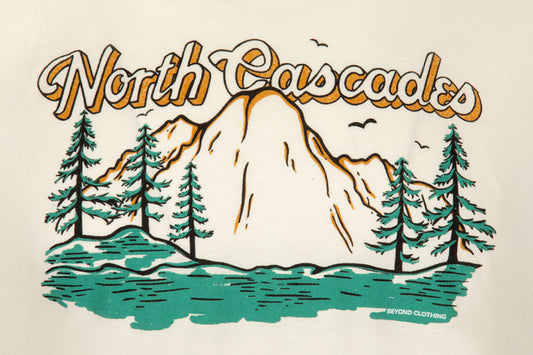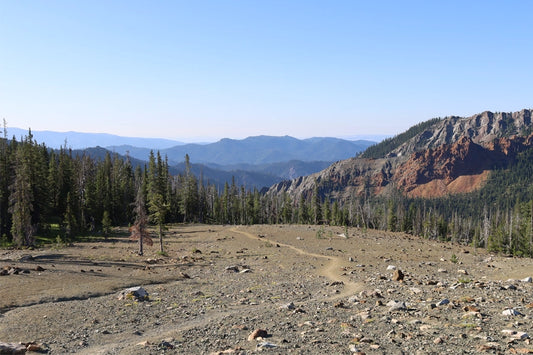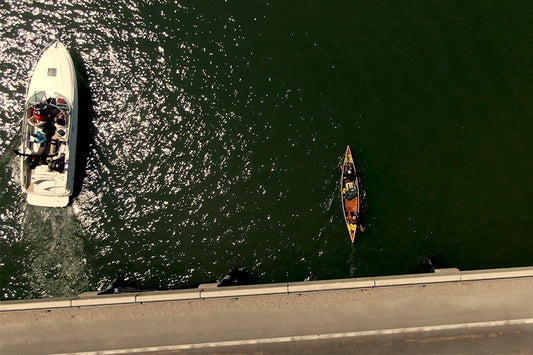Beyond ambassador, Sam Grafton has one thing on his mind and that is paddling really fucking big whitewater. He’s not a trust fund baby and he’s not a hippy dirtbag that’s trying to scrounge his next five bucks out of the seat cracks in your shuttle rig. He’s a real dude with a real job and he paddles some of the hardest whitewater in North America on a regular basis. Sam is respectful and humble and is well on his way to pushing the sport of whitewater kayaking to another level. We sat down with Sam to talk a bit about growing up in Index and how he manages his mental game when paddling high volume, big water class V.
You grew up in Index, Washington, which is sort of a whitewater Mecca to the North here in Washington State. Can you tell us a bit about what it was like to grow up in Index?
I really didn’t like it at first, being in the middle of nowhere. When I was 16 I started kayaking and felt like I was discovering Index for the first time. I wouldn’t trade growing up in Index for anything. It’s a small town full of climbers, paddlers, and people that are generally stoked.
Rob Mckibbin is a bit of a local legend in the boating world. What was the progression like boating with Rob in Index?
Rob is a total badass. I would not be the paddler I am today without him. He’s very nonchalant, “If I can do this anyone else can” sort of mentality. He was never an elitist. When I was learning how to creek, he was very safety conscious. But as soon as I got to a certain point he let me go and it was very clear to me that I had to make my own decisions. Even paddling huge high-water runs with Rob in his playboat, I knew that if something went wrong, there was very little he could do. If you swim, it’s really just you and the river and there’s not a lot of mercy out there.
He took me kayaking for the first time on a low-water Skokomish run. No roll, I just geared up and went kayaking.
How did that go?
It kind of sucked. I swam a bunch and got a little beat up. After that I spent every Friday night going to the local pool session to learn how to roll. I think I missed maybe two pool sessions that first year. I got my roll bombproof and at 17, I got my first taste of big class V on [the Tumwater Canyon section of the Wenatchee River]. After that, I was hooked.
In 2012, you fired up 275 ft. Sunset Falls on the Skykomish River at record high flows. It seems like that was a turning point for you in terms of kayaking and your approach to big water. What was running Sunset like?
Growing up with Sunset in my backyard, I was always thinking about it. In 2012 I was paddling lots of big water and it seemed like a good time to do it. One day I woke up and decided that it was the day that I was going to finally run Sunset. I called a few people to set safety and film. I hit my line and everything went perfectly.
How did running that drop have an effect on your mindset towards boating after the fact?
To be honest, I felt a little bit invincible. There wasn’t a lot that got me nervous after that. I haven’t run a drop since with that level of commitment: 6 inches off-line could have deadly consequences.
You can paddle just about anything, but it seems like you’re definitely more driven towards high volume, big water runs. What is it about big water that gets you stoked?
It’s just the most fun. Creeking is fun, waterfalls are cool, but big water is just nuts. I just feel like you have to take it the most seriously. Everything else fades away and you’re just focused on getting to the bottom. I like that there is very little room for error. This sort of situation forces you to be very focused.
What drives you to pursue that sort of chaos?
Being at the bottom is the best feeling. I don’t really get a big adrenaline rush, it’s more of a focused, 100% in the zone feeling that I’m after. I like the feeling of success, being at the bottom and looking back up. What a great feeling.
You also tend to paddle these high water runs by yourself. I sort of attribute your high water solo runs to free-soloing in climbing. High risk, very little room for error and widely debated in their respective forums. Can you give us a bit of insight into why you choose to paddle these runs alone?
I just want to run a lot of whitewater. I’ve got other things going on and I need to make the most of my paddling time. Also, people get freaked out about running big class V and that fear can be contagious. I don’t want to hear other people’s opinions and doubts, I want to run things because I know I can and I don’t want anyone to influence that.
How do you prepare yourself to paddle these do-or-die style runs?
My preparation is all mental, really. I mean, if I’m not exactly where I need to be, I’m going to die. That’s the sort of mentality I need to enter. As soon as you come out of your boat on one of these runs by yourself, its not certain that you’ll die, but I look at swimming as a last ditch effort that could very likely be fatal. In my mind, swimming is death. I try to avoid it at all costs.
Working as an EMT and a safety kayaker, you’ve seen all kinds of shit go down. How do those experiences play into your assessment of risk?
I like to know what happens when things go wrong. Working as an EMT, I’ve seen broken backs, traumatic brain injuries, the full gamut. A lot of paddlers don’t really know what a worst-case scenario looks like. I’ve seen a lot of things go wrong and I think that helps me evaluate risk in a more realistic way.
In 2013, you and another paddler collided on Tumwater Canyon, which resulted in a pretty serious injury. Can you tell us a bit about that experience?
It was the peak of spring high water. I had paddled the run solo the day before and went back with three of the best paddlers I know. In the first rapid, the bow of another paddler’s boat caught me square in the side of face. I had a half mile swim of big water class V. I don’t remember much of the accident. But I remember looking at my face in the mirror of the truck on the way to the hospital and seeing my jaw all in pieces hanging off the side of my face. I was lucky I had my crew there to save my life.
What did the road to recovery look like?
Initially my mindset was “I’m 22 and have a lot to live for. This is fucked. I’m done kayaking.” Over the coming weeks I realized it could have been a lot worse and five weeks later I was back on the river. It’s a great sport, but its one that can kinda fuck you up.
Since the injury, you’ve made quite a comeback with a successful descent of the Stikine and countless local class V runs at rather lonely levels. What have been some of your most memorable trips of the last year?
Tumwater is my favorite run. Getting back on Tumwater in 2014 was huge after my recovery in 2013. The Stikine is essentially the Everest of paddling and that expedition was a major milestone. It’s just as good as everyone says it is.
What do you have lined up for 2015?
I bought a ticket to Norway over the weekend, and with the snowpack that they’ve gotten this winter, it should be a rowdy trip! I’m really hoping to end this year in New Zealand if all goes well. At the very least, I’ll be in the Northwest hitting all the classics: lots of Tumwater laps, the North Fork of the Payette, and creeking up in British Colombia.






1 Comment
I have know sam for a long time, we met in EMT training and he is a genuine ass dude. Never have I seen someone with passion and drive in life and for kayaking as sam shows. This is a spot on article and interview with him! Big things coming from this guy in the future for sure!
Cheers!